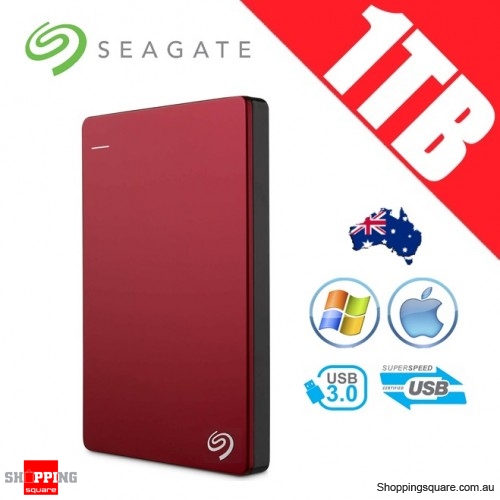
- #Seagate backup plus slim portable portable
- #Seagate backup plus slim portable Pc
- #Seagate backup plus slim portable plus
#Seagate backup plus slim portable plus
#Seagate backup plus slim portable portable
On a per-TB basis, the 5TB Backup Plus Portable is quite cost-effective. The 4TB WD My Passport comes between $100 and $115. On the pricing front, the 5TB drive is available for $95 - $130 (depending on the color), while the 2TB Slim is $55 - $80 (again, color-dependent). But the vast majority of the users are unlikely to notice anything causing significant issues. It's not perfect, and prolonged use shows more performance degradation compared to traditional CMR drives. Which may not seem like high praise, but it's actually a feather in Seagate's cap: the company has been able to tune the firmware of the drives to largely hide the detrimental effects of SMR. The performance profile of the Seagate Backup Plus Portable and Slim drives are as advertised. Corresponding idle numbers are 1.4W and 1.1W. Peak power consumption for the 5TB drive was around 4.2W, while the 2TB drive came in at 3.9W. The pictures below present the numbers in a compact and easy to compare manner.
#Seagate backup plus slim portable Pc
For bus-powered devices like the Seagate Backup Plus we are considering today, Plugable's USBC-TKEY power delivery sniffer was placed between the host PC and the storage bridge to record the power consumption.

CrystalDiskMark 5.1.2's benchmark traces with a region size of 8GB and the number of repetitions set to 5 are used. Power consumption is measured while processing the same workload on each of the DAS units. Storage Enclosure Thermal Characteristics The enclosures are made of plastic and do not get unduly hot.

The Backup Plus drives have similar thermal profiles - at the end of our sustained writes test (robocopy benchmark), the drive temperatures were only 48C and 49C respectively. Readers can click on the graphs below to view the full-sized version. Internal temperatures can only be gathered for enclosures that support S.M.A.R.T passthrough.

In order to identify the effectiveness with which the enclosure can take away heat from the internal drive, we instrumented our robocopy DAS benchmark suite to record various parameters while the robocopy process took place in the background. Higher temperatures tend to lower the reliability of the drives. The thermal design of the enclosures for HDD-based DAS devices is important because hard drives can't withstand as high a temperature range as flash-based devices. In this final section, we first take a look at the thermal performance and power consumption numbers. We have already discussed about the value additions in the first page of this review.

Value additions and other factors play a role too. Performance numbers are not the only metric of interest for the target market. Miscellaneous Aspects and Concluding Remarks


 0 kommentar(er)
0 kommentar(er)
